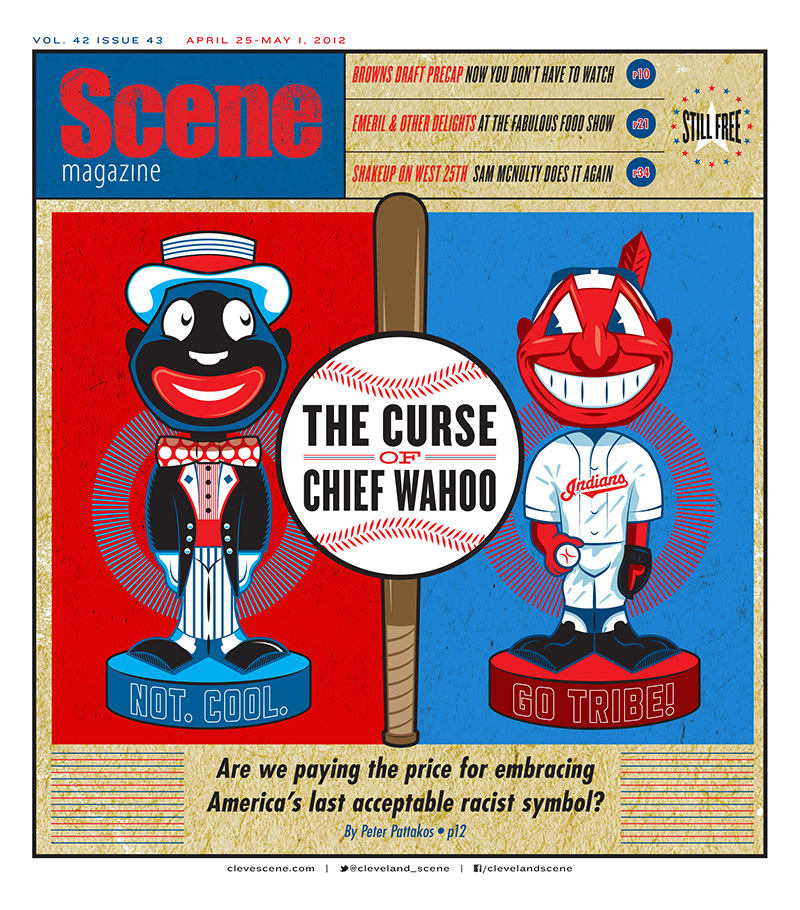Thanks to some lobbying by the Greater Cleveland Partnership, “one of the largest chambers of commerce in the United States,” a proposed 20-year extension of Cuyahoga County’s “sin tax” — an additional tax on alcohol and cigarettes that’s set to expire in 2015 after 25 years — could hit the ballot as early as next May. The first sin tax was used to pay for the construction of Cleveland’s professional sport facilities now known as Progressive Field, Quicken Loans Arena, and First Energy Stadium. The proposed extension would fund “upcoming major structural and core system elements and improvements” to these facilities.
Which of course raises questions about why the County’s poorest residents or anyone at all should be forced to subsidize the privately held for-profit businesses of the plutocrats who own the Cleveland franchises, Larry Dolan, Dan Gilbert and Jimmy Haslam. Local entrepreneur Alan Glazen has been an early opponent of the proposed extension, and wrote in the Plain Dealer last week that, “a sin tax, by nature, is how we stoop to our lowest ethical levels by making a minority pay for something enjoyed mostly by the majority.” A sales tax on alcohol and cigarettes is regressive by definition, and last week on WRUW’s Defend Cleveland show Glazen explained that Cuyahoga County’s sin tax is especially so, with 80% of the collected tax coming from cigarette sales, and 50% of Cuyahoga County smokers earning less than $25,000 a year. Glazen and others also point out that the facilities are “enjoyed” not just by Cuyahoga County residents, but to a great extent by folks from surrounding counties, and even globally when accounting for broadcast rights and Cleveland fandom at large.
In an August 26 column on the subject, Cleveland Journalism Hall of Famer Roldo Bartimole gets to the heart of the farcical concept that the public “owns” the sport facilities (Note: Haslam just pocketed $100 million for selling the naming rights to “the public’s” Cleveland Browns Stadium) in proposing a simple solution:
“The City of Cleveland and Cuyahoga County should do one thing: Sell each of the sport facilities to the respective team owners for $1 each. A great bargain. The facilities cost hundreds of millions to build. So, give ’em away. Then, as every other business, they pay their bills and get off welfare.”
Bartimole goes on to detail a litany of broken promises made by government officials and business leaders in pushing for the sin tax the first time around, and crunches some numbers to conclude that the sin tax ultimately costs the community more than it benefits. In doing so, he relies on the work of Mark Rosentraub, now a professor at the University of Michigan, formerly dean of Cleveland State’s urban affairs department and a Gateway board member, who wrote a book called, “Major League Losers: The Real Cost of Sports and Who’s Paying For It.”
According to Rosentraub, proponents routinely oversell claims about the impact of professional sports on a local economy. “In no county do professional sports teams account for as much as 1 percent of the county’s private sector payroll or 1 percent of all the private sector’s jobs,” he says. And the “spinoff” effect on local businesses “is quite small … merely a transfer of economic activity within your community.”
These conclusions are supported by a study by Jordan Rappaport and Chad Wilkerson, economists from the Federal Reserve Bank of Kansas City, showing that “the job creation and tax revenue benefits from hosting a major league franchise fall short of typical public outlays on constructing a new sports facility.”
All of which directly contradicts the Greater Cleveland Partnership’s claim that the sport facilities have “generat[ed] several billion dollars of economic payback to the community.”
Apart from economic benefits, Rappaport and Wilkerson also conclude that when “the impact of a sports franchise on a metro area’s quality-of-life … are included in the calculation, public spending may not appear to be such a bad investment for some metro areas.” Which is a special kind of laugh when it comes to Cleveland, even apart from the general difficulties in measuring such benefits. But more to the point, investment in the arts, parks, and education carry quality of life benefits as well (to say nothing of things like a social safety net), and these mainly not-for-profit endeavors don’t benefit from more than a small fraction of the sin tax revenue that goes to the for-profit sports franchises.
Which is to say that we should look forward to a productive public debate on this issue. The County isn’t over the knee like it was with Gateway and the Browns the last time around, the economic climate is night and day different, and the numbers that the Greater Cleveland Partnership is throwing around are somewhere between bonkers and open to a lot of questions. Do Dolan, Gilbert, and Haslam (the latter, at least, a heavily invested proponent of “free markets”) really need a sales tax subsidy or any kind of significant public outlay to run globalized professional sport monopolies in Cleveland? If so, it will be interesting to hear them explain exactly why, and it’s impossible to imagine that the Browns, Cavs, and Indians could continue to get away with keeping their financial statements under wraps if the owners are even going to start to make a case. It will also be interesting to hear politicians and business leaders explain why any such money should come from the County and not the State, and especially interesting to hear about why either the County or State should be spending its residents’ money on privatized professional sport franchises at all and not any of a number of other things. The time is especially ripe for folks in Cleveland with alternative ideas about how public money could be used to enhance quality of life to get busy with some proposals.
UPDATE/RELATED: Mayor Jackson’s secret ass-kicking of Joe Banner and the Cleveland Browns
—————




